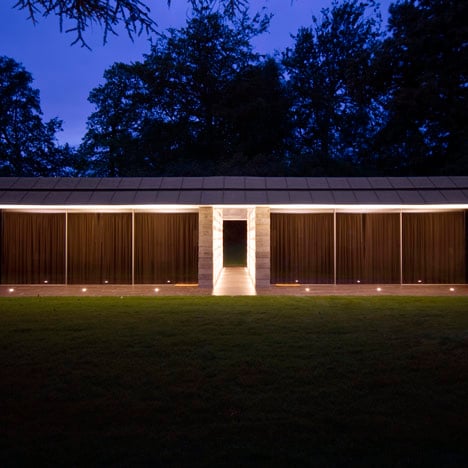
Capel Manor House Guest Pavilion by Ewan Cameron Architects
Two guest suites in the grounds of a ruined Victorian house in Kent are separated by a walkway cast from concrete set against rough planks of wood.
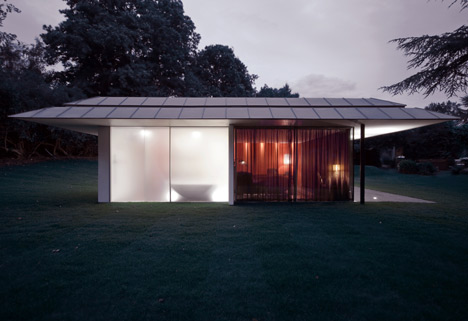
Glaswegian practice Ewan Cameron Architects have designed a layout that is mirrored along the dividing walkway, with each suite containing a bedroom, bathroom and storage space.
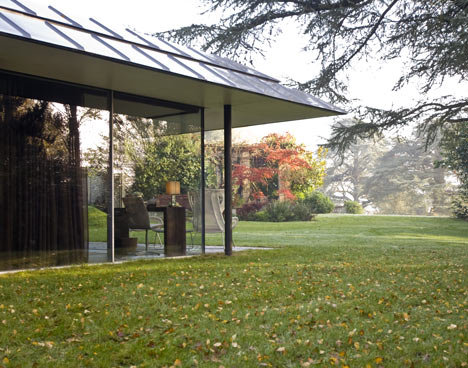
The zinc-clad roof encompasses both volumes and overhangs considerably to provide sheltered outdoor space.
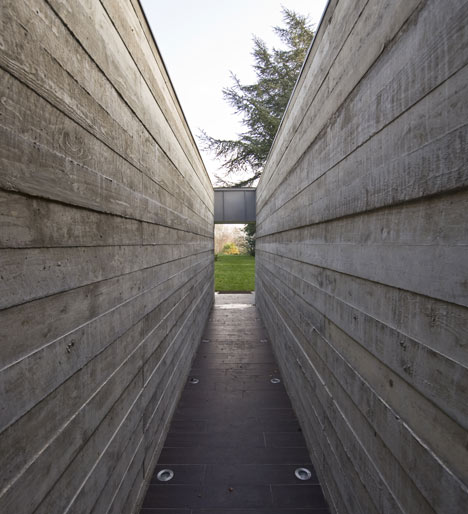
Floor to ceiling glass maximizes views from the front and outward-facing walls of the bedrooms, while translucent glass gives the bathrooms more privacy.
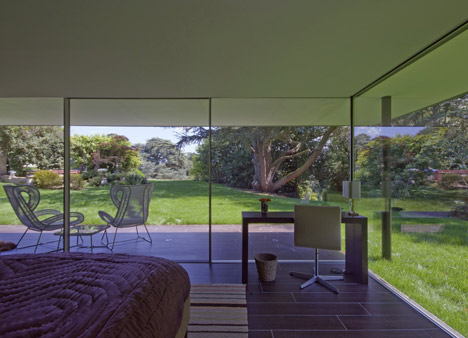
The pavilion sits on an arcaded podium belonging to the old manor, close to the modernist New Capel Manor House designed by Michael Manser in 1971.
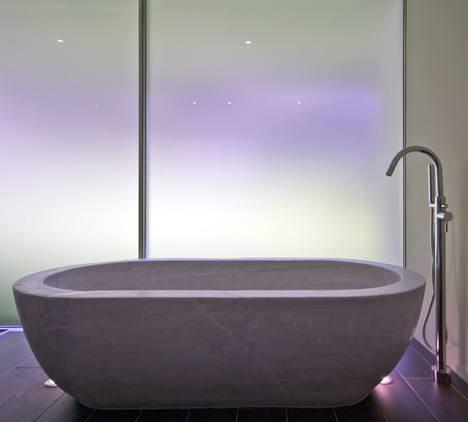
Photography is by Henryk Hetflaisz.
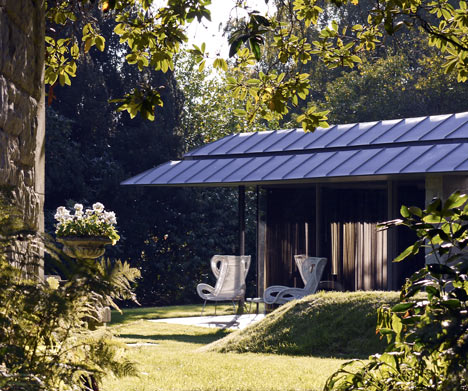
Here's some more text from Ewan Cameron Architects:
Ewan Cameron Architects have completed a new Guest Pavilion in the Kentish Weald near the village of Horsmonden.
The brief was to design a guest pavilion, comprising of 2 bedroom suites, that would sit adjacent to an Italianate orangery from 1860, on the grounds of Capel Manor House, an iconic modernist pavilion completed by Michael Manser in 1971. Both the main house and the new pavilion are spectacularly sited upon the raised, arcaded podium of a ruined Italianate mansion on a leafy estate that was the once the home of Jane Austen's fore-bears.
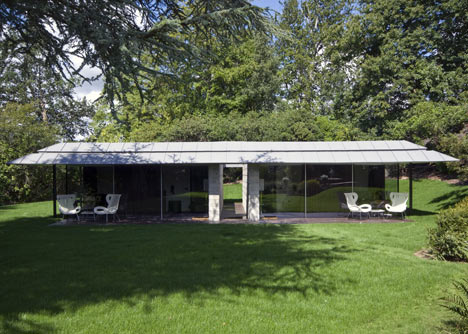
Since 2001 Capel Manor House has been the country home of Remy Blumenfeld, a television producer and entrepreneur. Ewan Cameron's response is a formal composition of separate planar elements to frame the garden; an architectural haiku.
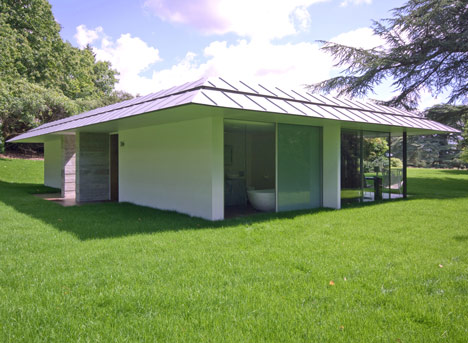
Reached via a secluded woodland passageway, we first encounter the simple rear façade, bedded down within the garden, embodying the Zen principle of Hide and Reveal. We can then choose to continue our walk through the gardens, passing through the centre of the building, which is open to the sky. This passageway is formed by two spine walls between the mirrored bedroom suites, giving each complete privacy. The walls are cast in Beton Brut concrete. Their rough mass contrasts with the lighter zinc and glass elements while the wood grain imprint left from the timber shutters echoes the woodland context.
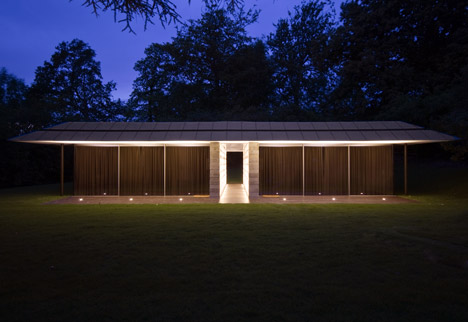
Each suite is entered through a pivoting walnut door. Inside they are subdivided by screens into a dressing area and bathroom, featuring hand-carved white Jaipur marble baths and basins. Finally the drama of the bedroom area and terrace is revealed: glass to glass walls, with elegant lightweight frames, bring the garden into the room and present the guests with carefully framed views of the valley below.
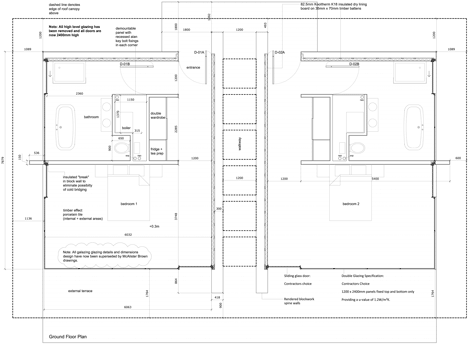
Click above for larger image
Ewan Cameron Architects worked closely with engineers David Narro Associates, to achieve the “floating” lightweight roof structure, clad in zinc. Kent based builders Green Construction ensured that the minimalist detailing was executed to an exacting standard. The design was much inspired by the Architect’s visits to the temples and zen gardens of Kyoto; in particular the idea of a building as a frame through which we contemplate nature.